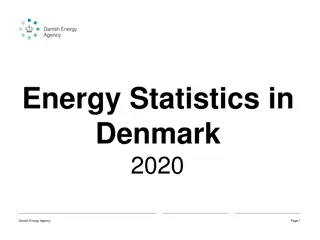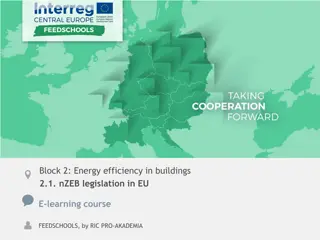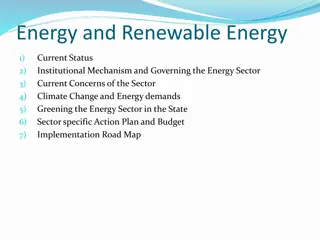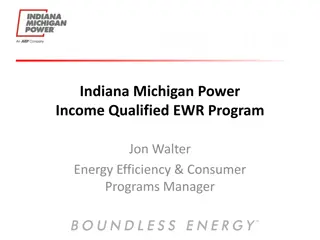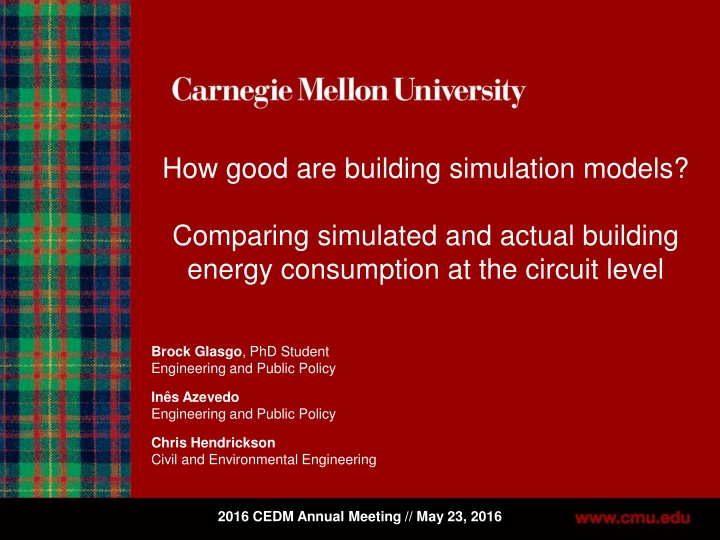
Comparing Simulated and Actual Building Energy Consumption
Residential buildings account for a significant portion of energy consumption in the US. This study explores the accuracy and calibration of building simulation models in predicting energy use. It discusses the role of building simulation tools in policy-making, design, and energy code compliance. The research emphasizes the need for better calibration methods and more extensive studies comparing modeled energy use to actual consumption to improve the reliability of building simulation models.
Download Presentation

Please find below an Image/Link to download the presentation.
The content on the website is provided AS IS for your information and personal use only. It may not be sold, licensed, or shared on other websites without obtaining consent from the author. If you encounter any issues during the download, it is possible that the publisher has removed the file from their server.
You are allowed to download the files provided on this website for personal or commercial use, subject to the condition that they are used lawfully. All files are the property of their respective owners.
The content on the website is provided AS IS for your information and personal use only. It may not be sold, licensed, or shared on other websites without obtaining consent from the author.
E N D
Presentation Transcript
How good are building simulation models? Comparing simulated and actual building energy consumption at the circuit level Brock Glasgo, PhD Student Engineering and Public Policy In s Azevedo Engineering and Public Policy Chris Hendrickson Civil and Environmental Engineering 1 2016 CEDM Annual Meeting // May 23, 2016
Residential Energy Use The residential sector accounts for about 21% of US energy consumption Studies find large opportunities for cost-effective energy savings in these buildings, but barriers remain: Across all levels of decision-makers, a lack of information is slowing the deployment of cost-effective efficiency measures (NRC, 2010) 2
Background: Building Simulation Tools Building simulation tools have been around for > 50 years Hundreds of software packages available As they have become more user-friendly and less computationally intensive, simulation tools are being used in a growing number of roles in policy and investment decision-making Commercial Residential Building and retrofit design Building operation optimization Performance verification for energy efficiency programs National energy code analysis and design Energy code compliance verification 3
Accuracy and Calibration Simulations are, at best, as accurate as their inputs Calibration methods improve accuracy, but are not consistently used in industry Studies comparing modeled energy use to actual use are very few Typically 1-2 buildings per study Nearly always whole-building measurements Example: Modeled vs. measured Energy Use Intensity (EUI) for ~70 LEED buildings About 25% of modeled buildings > 50% error (red lines) Conclusion: models can generally predict average use over a group of buildings but not specific buildings. Worse than modeled Better than modeled Figure: Turner, 2008 (red lines added) 4
Energy Code Analysis and Compliance Developed under the DOE Building Energy Codes Program by Pacific Northwest National Lab (PNNL, 2012) Uses DOE s EnergyPlus software Provides decision support to: 1. State and local jurisdictions considering adopting a newer energy code 2. The International Code Council (ICC) which publishes the most widely adopted building energy code (IECC) Compliance performance pathway Allows a building design to be certified compliant if it can be shown through simulation that it is as (or more) efficient as a baseline compliant building 5
Research Questions How accurate are the HVAC, water heating, and other load energy consumption estimates in fully specified EnergyPlus models? What building and occupant characteristics are most important for accurate building energy simulations? What do these results say about the use of EnergyPlus prototype buildings as a tool for investment decision-making and building energy code analysis? 6
Modeling Approach PNNL Prototypes Prototype Editor Home Models Audit Records Monitored Electric Data Local Weather Data 7
Detailed Home Data Provided by the Pecan Street Research Institute Sample contains ~700 volunteer homes with measured data at the circuit level at 15- minute intervals (49) homes meet data validation criteria Single-family detached homes Complete energy audit records Survey records Monitored (2014): Whole-home use AC condensing unit Central air fan Not a representative sample Average household income > $140k/yr 8
Prototypes vs. Pecan Street Homes PNNL prototypes are newer, larger, less airtight, and have more efficient ACs Pecan Street Homes Field PNNL Prototype Mean Std. Dev Age (yrs) < 10 24 21 Conditioned area (ft2) 2,400 2,100 670 Window area (% of ext. wall area) 15% 15% 5% Infiltration (Eff. leakage area, cm2) 960 880 390 Condensing Unit Efficiency (EER) 13.5 9.5* 2.1* * Includes correction factor for age of unit 11
Preliminary Results Whole-home Foundation type Primary heating source Water heater fuel Number of floors Square footage 12
Preliminary Results Whole-home Foundation type Primary heating source Water heater fuel Number of floors Square footage + Nameplate EER 13
Preliminary Results Whole-home Foundation type Primary heating source Water heater fuel Number of floors Square footage + Nameplate EER + Age correction for EER 14
Preliminary Results Whole-home Foundation type Primary heating source Water heater fuel Number of floors Square footage + Nameplate EER + Age correction for EER + Infiltration 15
Preliminary Results Whole-home Foundation type Primary heating source Water heater fuel Number of floors Square footage + Nameplate EER + Age correction for EER + Infiltration + HVAC setbacks 16
Preliminary Results AC Cond. Unit Whole Home Central Air Fan Other Loads 17
Preliminary Conclusions Large numbers of buildings can be modeled and simulated simultaneously using simple prototypes and audit records More detail is required to accurately model homes In our relatively undetailed models Partially specified models can give mixed results, even within systems Fan versus condensing unit consumption Other electric loads contribute significantly to model error Next steps Add all available characteristics from energy audits to develop fully specified models and observe device-level simulation accuracy Look at interval data to observe sources of model error Conduct sensitivity analysis to measure which fields most impact simulation output 18
Acknowledgements Advisors and co-authors In s Lima Azevedo & Chris Hendrickson Jihoon Min for coding advice Department of Engineering and Public Policy (cmu.edu/epp) Center for Climate and Energy Decision Making (cedmcenter.org) The Pecan Street Research Institute 19








